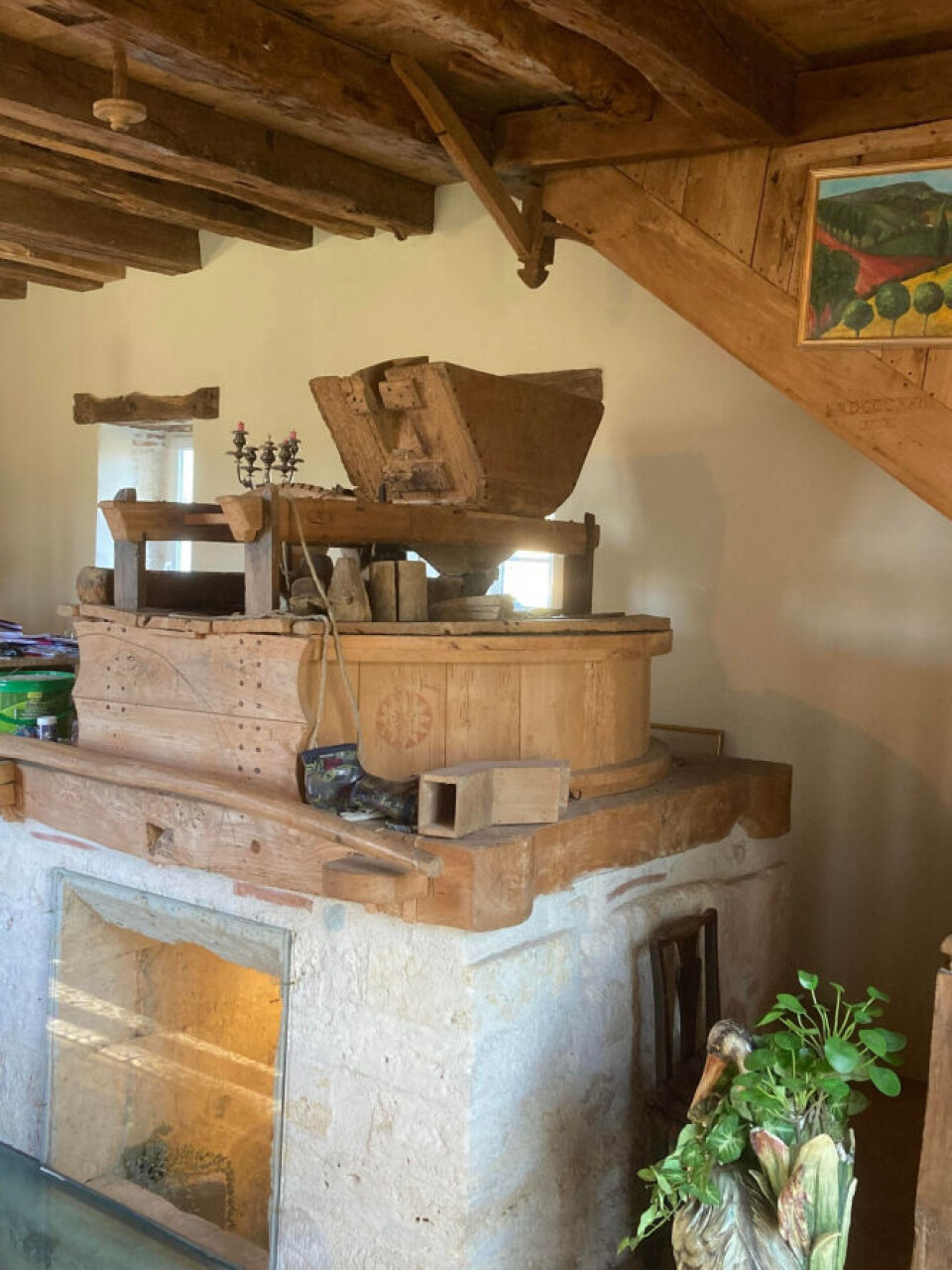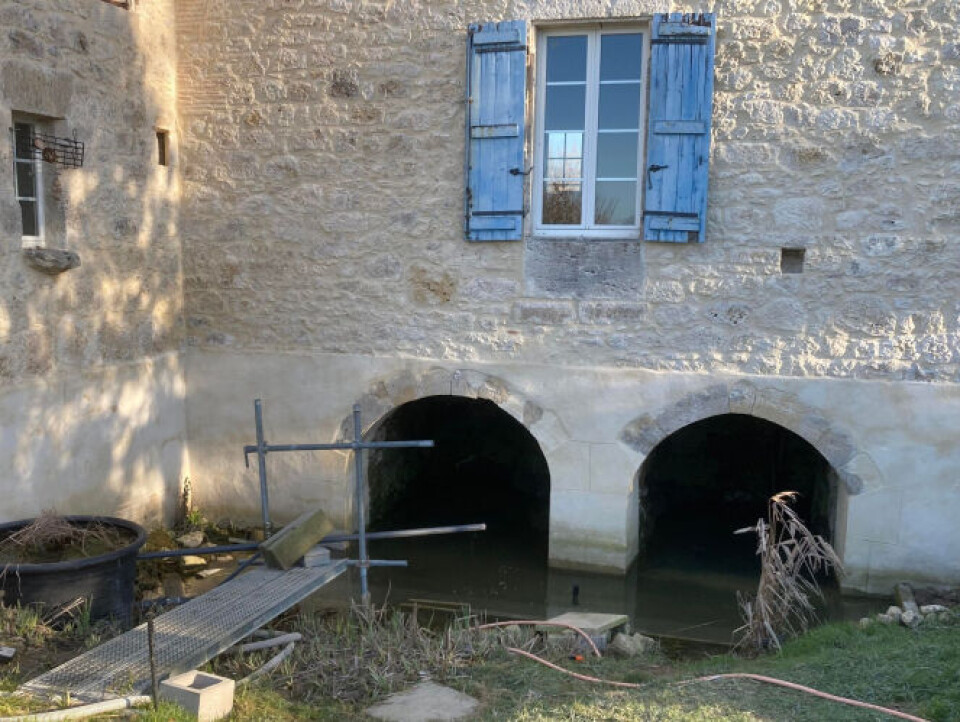-
Closest ski resort to Paris for sale
La Loge des Gardes, a family-friendly resort, offers year-round activities and is seeking new ownership
-
Who is liable for repair costs after the sale of a property in France?
Sellers can be liable for repairs in the case of hidden defects
-
French wealth tax: Six ways to reduce what you have to pay
The property valuation threshold for France's impôt sur la fortune immobilière (IFI) in 2025 is €1.3million per tax household
Unusual French properties: Mill owners can see water below their feet
In our series looking at unusual properties, Charles Miskin tells us he has no regrets after falling for an old watermill

When Charles Miskin first moved to France in 2005, he bought a modest stone property in the village of Beauville in Lot-et-Garonne.
From there, he involved himself in village life and carried out his charity work.
Fifteen years on, he and his new wife Anne-Louise Massey chose a home together – and opted for something a little more unusual.
“We wanted to find an interesting, habitable property with a nice garden,” says Charles.
When they found Moulin de Berdassot in Cauzac, just five minutes from Beauville, in April 2021, they fell head over heels in love with the thoughtfully renovated home.
Mill operational until 1970s
“The watermill was an operating flour mill until the 1970s,” says Charles.
“Local farmers have told me they remember it working when they were young.”
After it fell out of use, the building was bought in 1997 by a man intent on converting the watermill into a home.
“He had it for about 20 years and did a lot of structural and renovation work,” says Charles.
“When he arrived, the floors were just beaten earth.”
Sadly, the owner had to sell the property for personal reasons before the renovations were completely finished.
“He had planned a lot of other things which never quite got fitted,” says Charles.
“There are still cables and wires in the walls and we’re not sure what they’re for – but it’s fun trying to work out what the plan was!”
The property was then acquired in 2015 by a couple who continued to work on it, including the kitchen area and finishing off some of the other works.
Original features and charm

By the time Charles and Anne-Louise took ownership in the summer of 2021, the mill had been converted into a quirky but stylish home, retaining many of the building’s original features along with its charm.
“The main room, what we call the mill room, is 9m x 6m.
It still has the original supports and one of the mill stones, the hopper and feed mechanism, as well as the remains of the turbines underneath,” says Charles.
“There are also two vaulted arches beneath the floor and a glass panel, through which we can see the water below and feed the fish through a copper tube.”

The mill has modern bedrooms and a bathroom on the second floor.
In addition, there are several small rooms which would originally have been storage areas.
The largest of these has been converted into a kitchen.
Other rooms leading off from a hallway have been turned into a shower room, spare bedroom and wine storage, cooled by a convenient small window opening that doubles as a glorified cat flap.
‘Most amazing feature’
“The most amazing feature is at the end of the hallway,” says Charles.
“There is a barn structure, or abri, with the old timberwork enclosing three sides. It offers lovely views of the fields beyond.”
The watermill sits in two-thirds of a hectare of land.
While the original mill stream has been diverted around the property, the millpond still receives water from underground and will refill itself if emptied.
Clearly, the mill makes a beautiful home, but what are the realities of living there?
“There’s always lots to do,” says Charles.
“I’m an engineer by trade, which comes in useful. Anne-Louise’s eye for décor and gardening expertise means we’re a great team.”
Flood risk
As the property sits above water, it comes with a risk of flooding.
Charles says it has not flooded since they moved in, but the river has been close to overflowing on occasions.
A large spillway should offer some protection, as well as the way the property has been designed.
“Old mills are well placed to avoid floods and ours sits a little above the surrounding alluvial fields on some bedrock, which would have taken the force of the water without undermining the building.”
Aside from the flood risk, the property’s size and complex layout also make life more challenging.
“We’ve had to insulate, but even with this and pellet burners, it is not instantly warm like a modern house.
“We’ve got stone walls all the way around and a lake partly underneath, so it can be difficult to retain heat. It can also be difficult to clean.”
Read more: Old rural homes should be exempt from EU energy plan says French group
Pros outweigh the cons
However, he is adamant the pros outweigh the cons:
“It is such a beautiful building and we love how interesting it is.
The location is brilliant, close to the village and right in the middle of a farmer’s field with combine harvesters going past.
The couple who first converted it planted a hundred trees and we almost have a proper park now, all fairly mature.
“Most mornings we sit and have breakfast looking out over the fields – it really is a wonderful place to live.”
The mill is opening its doors to the public for visits on May 20 to 21.
See journees-europeennes-des-moulins.org.
Related articles
Quirky property: Family turn laboratory into cut-price home near Paris
A chateau for just €100? French mairie buys fairytale ruin
‘Restoring a medieval chateau in France is more than lifetime project’
























